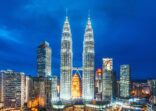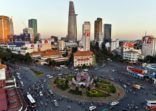Vietnam, Argentina, Romania and Pakistan (VARP) seem to be positioned as the new BRICs — strong growth economies marketed as a group. BRICs, of course, crumbled as an investible group. But there are differences.
“The VARP economies are over 13 times smaller than the BRICs and therefore we do not expect them to help drive the global economy in the same way, or to generate the same levels of returns for investors,” said Tim Love, investment director for emerging market equities at GAM.
“However, these markets can offer a deeper dimension to an emerging markets portfolio with potential attractive risk returns – because of their diversity.”
Pakistan allocations
Among the VARPs, Pakistan, population 189 million, is attracting investment due to attractive valuations based on fundamentals.
Dominic Bokor-Ingram at Charlemagne Capital, said Pakistan accounted for 18% of his Magna New Frontiers Fund, up from just 6% at the start of 2016 and nearly twice the benchmark weighting.
“It increased recently both due to the market becoming investable and because of the strong performance of the stocks we own,” Bokor-Ingram said. “We have a single country limit of 20% so we will not be able to go much higher.”
The Karachi Stock Exchange 100 Index, which includes the largest company in each of Pakistan’s 34 sectors, plus the next 66 largest companies, regardless of their sector, returned more than 45.1% in 2016. Companies are valued at nine times price-to-earnings and offer a market dividend yield of 5%.
Cement companies made particularly compelling investments for stock pickers like Bokor-Ingram. These companies have been able to maintain their margins while adding capacity needed to satisfy the demand for cement generated by an economy that was growing at around 5% per year but where the key ingredient limestone was difficult to come by.
Index inclusion?
Before the reformist prime minister Nawaz Sharif took office in 2013, Bokor-Ingram’s frontier market fund had, like so many others in the sector, no investments in Pakistan at all.
Pakistan had been shunned for nearly a decade after the investment situation deteriorated in the early 2000s, prompting investors to sell out and index provider MSCI to drop it from its widely followed MSCI Emerging Market Index in 2008. It was later included in the MSCI Frontier Markets Index, where it now accounts for 9.6%.
However, by 2015 its equity market had grown significantly and liquidity had improved. MSCI announced that it would review Pakistan in 2017 and possibly include it in the MSCI Emerging Markets Index. Inclusion would attract more investors that use the index as a benchmark for their allocation to emerging markets.
Rami Sidani, head of frontier investments at Schroders, said Pakistan has a young, underinvested economy that was growing from a low base. More importantly, the government had started with much-needed structural reforms.
The Schroder Frontier Markets Fund has 14.8% of its portfolio invested in Pakistan, up from 10% in 2013. Sidani said his investments in Pakistan, most of which were in banks and companies producing cement, fertilizer or food, had returned close to 50% in 2016 alone.
“The [index] upgrade would just be a bonus, on top of what is already a fundamentally solid case for investing in Pakistan,” Sidani said. “But we need the government to push ahead with the reforms.”
Strong fundamentals and risk
Pakistan has also caught the attention of Love at GAM, who has invested 2% of his JB Emerging Market Equity Fund in the country over the past two years in several cement, electronics and consumer goods companies.
Much of the focus has been on Pakistan’s economic growth story, but Love said there were other factors that had been underestimated by many investors such as the $55bn infrastructure investment pledged by China that would boost the economy.
“The relationship of investing on thematics is always dangerous,” said Love, adding that many Pakistani companies had fundamentals strong enough to justify an allocation regardless of the macroeconomic outlook.
Choice is also still limited in Pakistan – at least when compared to larger emerging markets. Investments have so far been concentrated in a handful of companies such as Fauji Cement, Lucky Cement or Pak Elektron.
It also remains one of the riskier investments. Love said if the investment case for Pakistan played out, his investments could double their value over three years. If it does not, they could lose 30%.
In a recent country assessment, The Economist Intelligence Unit, a think tank, predicted that government expenditure and infrastructure investment would support economic growth but that political instability remained a cause of concern as the parties geared up for the 2018 parliamentary elections.
________________________________________________________________________________
Frontier markets were up about 6% in 2016, and within them, Pakistan had strong growth:

















